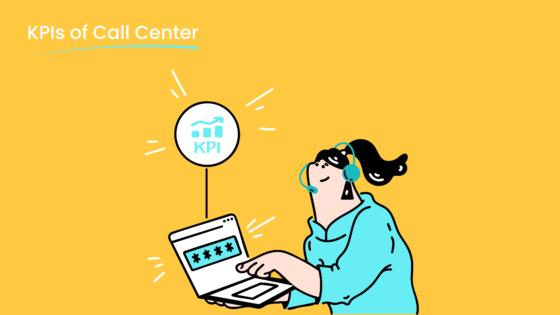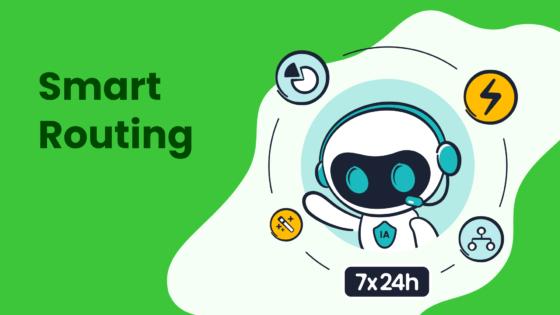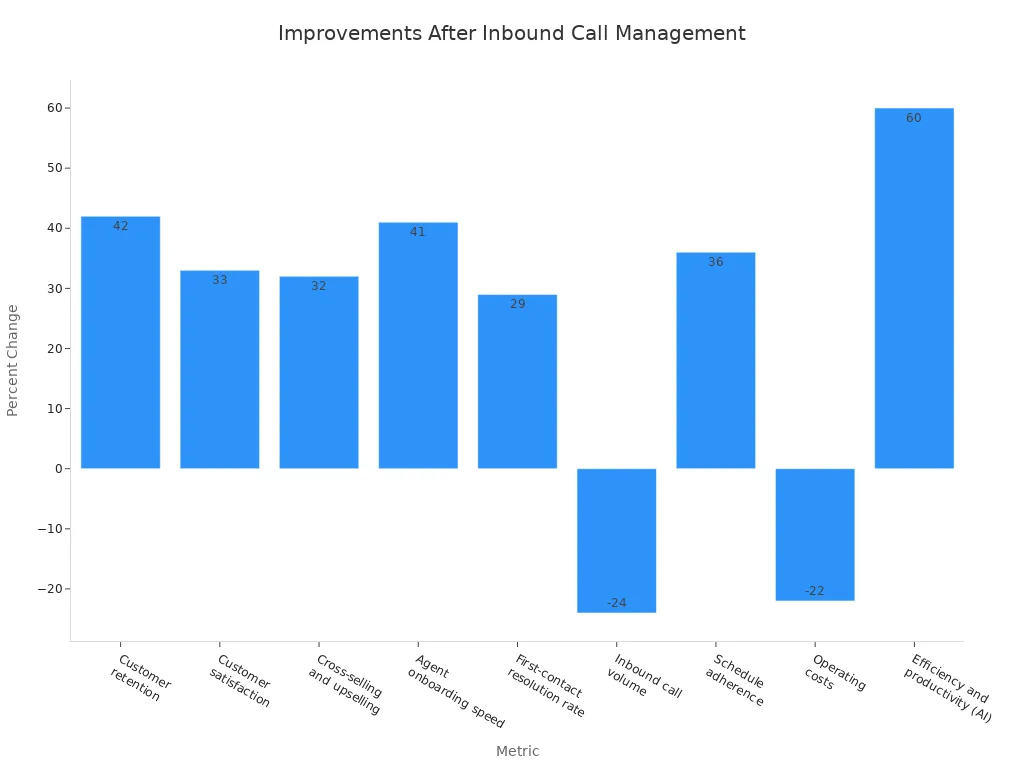Understanding Inbound Calls and What They Mean for Business

Inbound calls are phone calls initiated by customers or prospects reaching out to a business, typically seeking support, information, or service. Understanding what are inbound calls is crucial for enhancing customer service quality and driving overall business success. Effective management of these interactions is essential for brands to differentiate themselves in competitive markets. Recent studies highlight the significance of customer communication:
- 88% of CX specialists consider personalization vital for customer loyalty.
- 73% of consumers would abandon a company after just one poor experience.
- Businesses with robust omnichannel contact center strategies experience greater growth and retention.
Sobot, a leader in intelligent contact center solutions, leverages Sobot AI and the Sobot call center platform to help organizations deliver seamless and efficient customer experiences.
What Are Inbound Calls?
Definition
Understanding what are inbound calls forms the foundation of modern customer engagement. Inbound calls refer to phone calls that customers or potential clients initiate to a business's contact center. These calls typically reach help desks or inbound call centers, where agents address questions, provide support, or offer information about products and services. Unlike outbound calls, which businesses initiate for sales or marketing, inbound calls are reactive. Customers reach out when they need assistance, want to resolve an issue, or seek information.
Industry authorities define inbound calls as telephone communications started by customers or prospects who want help, information, or support. These calls often go to customer service, sales, or technical departments. The main goal of handling inbound calls is to resolve customer queries quickly and efficiently, which helps build satisfaction and loyalty. In a contact center, agents use tools like CRM systems and IVR (Interactive Voice Response) to personalize the experience and route calls to the right person.
A recent study shows that voice channels, including inbound calls, account for 65% of all inbound contact center interactions. This figure has remained steady for over a decade, highlighting the ongoing importance of phone-based communication in customer service.
Note: Inbound calls remain a dominant channel for customer service, even as digital alternatives grow.
How They Work
The process of handling what are inbound calls in a contact center involves several clear steps. When a customer dials the business, the call enters the contact center system. An Automatic Call Distributor (ACD) routes the call to the next available agent. The agent then verifies the caller’s identity, often using customer ID or security questions, to protect privacy.
Once verified, the agent listens to the customer’s issue, asks clarifying questions, and records the details in the CRM or ticketing system. The agent searches for a solution using internal knowledge bases or past records. If the agent can resolve the issue, they explain the solution and guide the customer through any necessary steps. If the problem is complex, the agent may escalate the call to a supervisor or specialist.
After resolving the issue, the agent confirms that the customer feels satisfied. The agent then ends the call politely and documents the interaction for future reference. Quality assurance teams may later review the call to ensure high service standards.
Here is a simplified view of the inbound call process in a contact center:
- Customer initiates the call.
- System routes the call to an available agent.
- Agent verifies customer identity.
- Agent listens and records the issue.
- Agent searches for and provides a solution.
- Agent escalates if needed.
- Agent confirms satisfaction.
- Agent closes the call and documents details.
- Quality assurance reviews the call.
Contact centers like Sobot enhance this process with intelligent IVR, unified workspaces, and AI-powered voicebots. These tools help agents manage calls efficiently, reduce wait times, and improve customer satisfaction.
| Aspect | Inbound Calls | Outbound Calls |
|---|---|---|
| Initiation | Customer-initiated (incoming) | Business-initiated (outgoing) |
| Focus | Customer service, support, relationship building | Sales, lead generation, promotions |
| Business Objective | Resolve issues, enhance satisfaction and loyalty | Expand market reach, drive sales |
| Interaction Style | Reactive, empathetic, problem-solving | Proactive, scripted, persuasive |
| Tools & Techniques | CRM, IVR, call routing | Auto-dialers, scripts, strategic timing |
| Customer Experience | Builds trust and loyalty | Can be intrusive but effective if respectful |
| Best Use Case | Supporting existing customers | Engaging new prospects |
Examples
Real-world examples help clarify what are inbound calls in a contact center environment. These calls cover a wide range of scenarios, each requiring a tailored approach from agents. Some common examples include:
- Greeting new or returning customers with a personalized welcome.
- Listening to a customer describe a problem with a product or service.
- Sharing helpful resources or links during the call.
- Placing a customer on hold or transferring the call to a specialist.
- Updating customer account information as requested.
- Handling complaints or feedback with empathy and professionalism.
- Upselling or cross-selling related products when appropriate.
- Informing customers about service interruptions or ongoing fixes.
- Admitting when the agent does not know the answer and promising to follow up.
- Concluding the call with a polite closing and ensuring the customer feels satisfied.
For instance, a customer might call a contact center to check the status of an order. The agent greets the customer, verifies their identity, and provides an update. If the product is out of stock, the agent may offer to place a backorder or notify the customer when it becomes available. In another scenario, a customer calls to report a technical issue. The agent listens, troubleshoots the problem, and guides the customer through the solution. If the issue is complex, the agent escalates the call to a technical specialist.
Contact centers like Sobot support these interactions with advanced features. Sobot’s unified workspace allows agents to access customer data and communication history in one place, making it easier to provide fast and accurate support. Intelligent IVR systems route calls to the right department, reducing wait times and improving the overall experience.
Tip: Effective handling of what are inbound calls can turn a frustrated customer into a loyal advocate.
Business Value of Inbound Call Handling
Customer Service Impact
Effective inbound call management shapes the foundation of customer service in every contact center. Businesses that prioritize quick, empathetic responses see higher retention and satisfaction rates. Studies show that poor call handling can result in up to 30% lead loss, while AI-powered solutions reduce wait times and call handling time by up to 40%. Multi-lingual support increases customer satisfaction scores by 30%, especially in technical support environments. First-contact resolution stands out as a key performance indicator, directly linked to higher satisfaction and lower customer churn. Professional inbound call handling builds trust and loyalty, leaving a positive impression on every incoming call.
Note: Companies that resolve issues on the first call reduce repeat contacts and improve customer experience.
Sales and Support Roles
Inbound contact centers play a vital role in both sales and post-sale support. Agents handle product inquiries, pricing questions, and upgrade requests, acting as the first touchpoint for customers. Trained staff identify sales opportunities through cross-selling and upselling during inbound calls. Automation of repetitive tasks allows agents to focus on high-value activities, improving productivity. AI tools enable scalability and multilingual support, ensuring efficient handling of large volumes of inbound leads. Continuous monitoring and optimization of the inbound sales funnel enhance customer engagement and drive sales growth.
- Inbound calls often represent high-quality leads, with 66.4% of companies rating them as a top source.
- Proper call routing ensures calls reach the most qualified sales agents, increasing conversion rates.
- Providing sales reps with contextual data about callers improves engagement and shortens sales cycles.
Sobot Voice/Call Center Advantages

Sobot’s Voice/Call Center delivers measurable improvements for businesses seeking reliable inbound contact center solutions. The platform guarantees 99.99% uptime, ensuring every incoming call receives prompt attention. Integration with CRM systems is fast and seamless, exceeding expectations for operational efficiency. Sobot’s unified workspace empowers agents to manage calls and customer information in one place, improving reception efficiency by 48%. Intelligent IVR, automatic call distribution, and AI-powered voicebots streamline call routing and enhance customer service. Real-time monitoring and comprehensive data analysis help businesses optimize performance and increase customer satisfaction.
The Weee! customer story highlights these benefits. After implementing Sobot’s voice product, Weee! saw a 20% increase in agent efficiency and a 50% reduction in resolution time. Customer satisfaction scores reached 96%, demonstrating the impact of advanced inbound call handling. Sobot’s cloud-based, scalable solution supports global phone numbers and encrypted data transfer, making it ideal for medium and large enterprises across industries.
Learn more about Sobot’s Voice/Call Center: https://www.sobot.io/voice/
Types of Incoming Call in Customer Service

Customer service teams in every contact center handle a wide variety of incoming call types each day. Understanding these categories helps businesses allocate resources, streamline workflows, and deliver better experiences. Sobot’s omnichannel and voice/call center solutions support agents in managing each type efficiently.
Inquiries
Many incoming calls begin as simple inquiries. Customers often reach out to ask about product features, order status, or company policies. In the technology sector, these calls may involve questions about billing, payment methods, or account details. Agents in the contact center use unified workspaces to quickly access information and provide accurate answers. For example, a customer might call to check the delivery date of an online order or to clarify a recent charge on their account. Fast, clear responses build trust and encourage repeat business.
Support Requests
Support requests form a significant portion of incoming call volume in customer service. These calls often involve troubleshooting, technical issues, or requests for account changes. Contact center protocols organize responses into phases: immediate, short-term, and extended. Agents follow clear steps, such as verifying identity, documenting the issue, and escalating complex cases. For instance, a customer may report a malfunctioning device or request help resetting a password. Sobot’s intelligent IVR and AI-powered voicebots help route these calls to the right specialists, reducing wait times and improving resolution rates.
Tip: Well-trained agents and scalable infrastructure ensure the contact center can handle both routine and emergency support requests.
Sales and Product Info
Some incoming calls focus on sales or product information. Customers may inquire about new features, upgrades, or renewal options. In subscription-based services, calls about upgrading, renewing, or canceling products are common. Agents in the contact center identify sales opportunities by listening for cues and offering relevant solutions. For example, a caller might ask about the benefits of a premium plan or request a demonstration. Sobot’s unified workspace gives agents access to customer history, making it easier to personalize recommendations and increase conversion rates.
Complaints and Feedback
Complaints and feedback are critical for improving customer service. Incoming calls in this category often express dissatisfaction or suggest improvements. Businesses categorize and prioritize these calls using structured workflows. They segment customers by value, assign experienced agents to high-priority cases, and use automation tools like AI call tagging. For example, a customer might call to report a recurring issue or provide feedback on a recent interaction. Sobot’s omnichannel solution enables real-time sentiment analysis and automated routing, ensuring prompt attention to urgent matters. Closing the feedback loop by acknowledging input and sharing outcomes helps build loyalty and trust.
Note: Effective handling of complaints and feedback reduces employee stress and increases overall customer satisfaction.
Benefits of Effective Inbound Call Management

Customer Satisfaction
Effective inbound call management transforms the contact center into a hub for positive customer experiences. When customers reach out, they expect quick answers and helpful support. A well-organized contact center uses tools like intelligent IVR, unified workspaces, and AI-powered voicebots to reduce wait times and resolve issues on the first call. This approach leads to measurable improvements in customer satisfaction. For example, after implementing advanced systems, companies report a 33% improvement in satisfaction and a 29% increase in first-contact resolution rates. The following table highlights key metrics that improve with effective inbound call management:
| Metric | Improvement/Value |
|---|---|
| Customer retention | 42% increase |
| Customer satisfaction | 33% improvement |
| Cross-selling and upselling | 32% increase |
| First-contact resolution rate | 29% improvement |
| Inbound call volume | 24% reduction |
Contact center agents who have access to customer history and AI support can personalize every interaction. This builds trust and encourages customers to return.
Loyalty and Retention
A contact center that resolves issues quickly and accurately helps build loyalty. Customers who receive fast, effective service are more likely to stay with a brand. Efficient inbound call management reduces frustration and repeat calls. Proactive engagement, such as follow-ups and surveys, shows customers that the company values their feedback. Personalized interactions, powered by CRM data, create emotional connections. Omnichannel support ensures customers can reach the contact center through their preferred channels, increasing convenience and reducing abandonment. These factors combine to boost retention and turn satisfied customers into repeat buyers.
Companies that monitor Net Promoter Score (NPS) and Customer Satisfaction Score (CSAT) see direct improvements in loyalty and repeat business.

Operational Efficiency with Sobot
Sobot’s contact center solutions drive operational efficiency for businesses of all sizes. The platform automates routine tasks, allowing agents to focus on complex customer service needs. Sobot’s AI Agent learns from knowledge bases and provides accurate answers, reducing manual workload by up to 90%. Companies like Renogy have seen significant reductions in knowledge base maintenance. AI Copilot assists agents by suggesting replies and drafting summaries, which increases productivity. Administrators use AI Insight dashboards to optimize management decisions. Sobot’s omnichannel integration ensures seamless customer experiences across phone, chat, email, and social media. This unified approach streamlines workflows, reduces costs, and improves agent performance in the contact center.
How to Handle Inbound Calls with Sobot
Call Center Technology
Sobot equips businesses with advanced call center technology designed for efficient inbound call management. The platform features intelligent IVR systems that guide callers through clear menus, allowing quick access to the right department. Automatic Call Distribution (ACD) routes calls based on agent expertise and workload, reducing wait times and unnecessary transfers. Sobot’s AI-powered voicebot handles routine inquiries, freeing agents to focus on complex issues. The unified workspace consolidates customer data, call records, and communication history, giving agents a complete view during every interaction. This technology ensures the contact center operates smoothly, even during peak periods, and supports global operations with multilingual and time zone features.
Best Practices
Managing inbound calls in a modern contact center requires a strategic approach. Sobot recommends several best practices to maximize customer satisfaction and operational efficiency:
- Analyze call data to identify common reasons for contact.
- Set up simple IVR menus for fast navigation.
- Use ACD to route calls to the most qualified agents.
- Integrate CRM systems for real-time customer information.
- Leverage AI for call prioritization and urgent issue detection.
- Provide regular agent training with scenario-based exercises.
- Monitor key performance indicators like First Call Resolution and Customer Satisfaction.
These steps help the inbound contact center deliver personalized service, reduce repeat calls, and improve first-contact resolution rates. Sobot’s AI Copilot supports agents by suggesting replies and drafting summaries, further boosting productivity.
Integration and Analytics
Sobot’s contact center platform integrates seamlessly with existing business systems, including CRM and ticketing tools. The AI Agent automates customer reception and updates the knowledge base by extracting information from uploaded files. Real-time analytics track metrics such as call duration, talk-to-listen ratio, and customer satisfaction scores. Speech analytics convert call recordings into structured data, identifying trends and customer sentiment. Managers use these insights to optimize staffing, refine sales strategies, and enhance agent training. Companies like Renogy have seen a 35% increase in direct response rate and a 90% reduction in knowledge base workload after adopting Sobot’s AI-driven solutions. This data-driven approach ensures continuous improvement in every inbound contact center.
Inbound calls connect businesses with high-intent customers, driving growth and loyalty. Research shows that 65% of customers prefer phone support, and effective contact center strategies improve satisfaction and conversion rates. Sobot’s AI-powered contact center reduces agent workload, boosts NPS, and delivers 24/7 service. Companies should review their inbound call approach, invest in advanced contact center technology, and empower agents for better results. Explore Sobot’s solutions to elevate customer service and operational efficiency.
FAQ
What is an inbound call in a contact center?
An inbound call happens when a customer contacts a business for help, information, or support. The contact center receives the call and connects the customer to an agent who can assist.
How does Sobot improve inbound call management?
Sobot uses intelligent IVR, AI-powered voicebots, and a unified workspace. These tools help agents answer calls faster, route customers to the right team, and keep all information in one place.
Why are inbound calls important for business growth?
Inbound calls connect businesses with real customers who need help or want to buy. Handling these calls well builds trust, increases loyalty, and helps companies grow.
Can Sobot integrate with existing CRM systems?
Yes. Sobot’s Voice/Call Center integrates easily with popular CRM systems. This allows agents to view customer history and details during every call, improving service quality.
What types of issues do inbound calls usually cover?
Inbound calls often include product questions, support requests, sales inquiries, and feedback or complaints. Sobot’s omnichannel solution helps agents manage all these call types efficiently.
